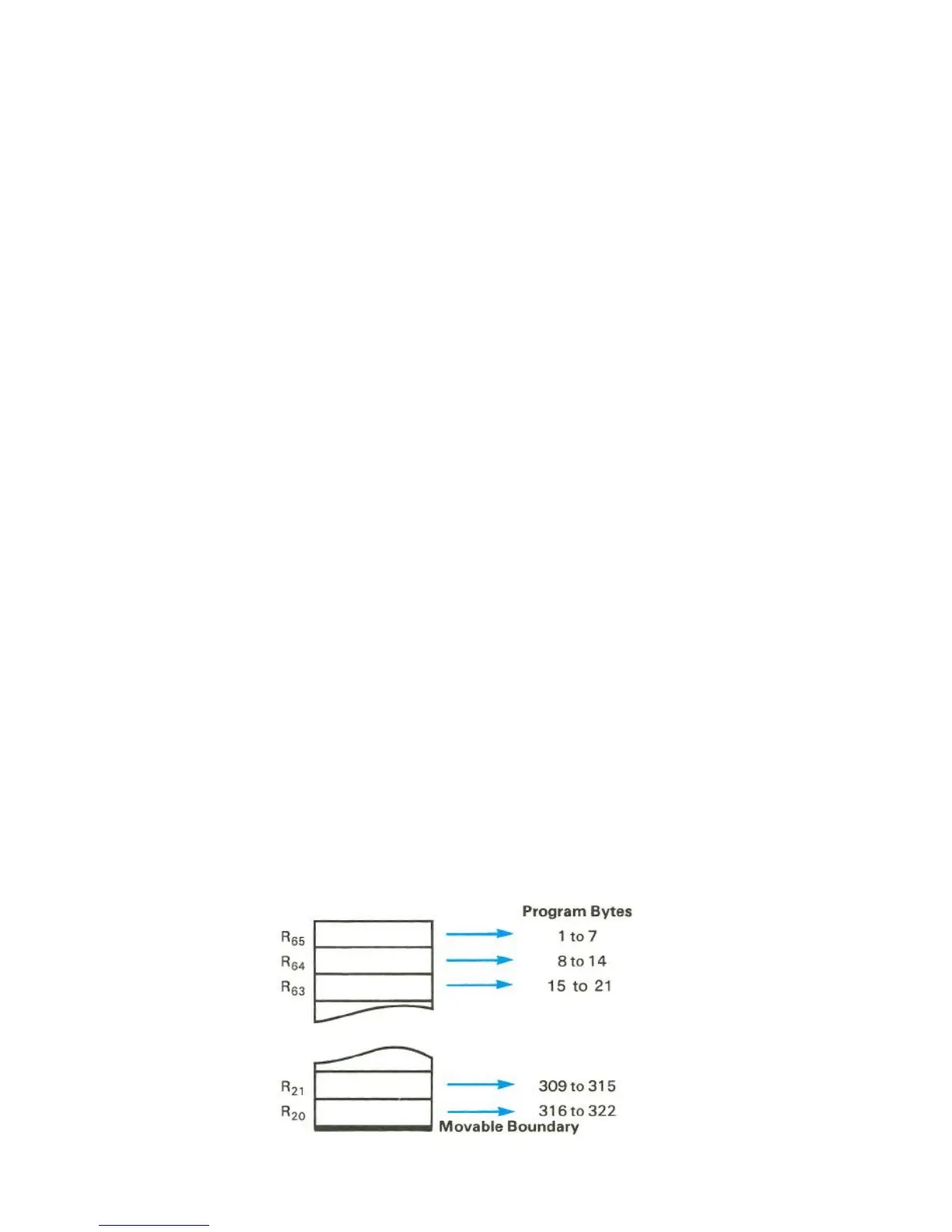Appendix C: Memory Allocation 217
When converting registers, note that:
You can convert registers from the common pool only if they are
uncommitted. If, for example, you try to convert registers which
contain program instructions, you will get an Error 10 (insufficient
memory).
You can convert occupied registers from the data storage pool,
causing a loss of stored data. An Error 3 results if you try to
address a "lost" that is, nonexistent register. Therefore, it is
good practice to store data in the lowest-numbered registers first,
as these are the last to be converted.
Program Memory
As mentioned before, each register consists of seven bytes of memory.
Program instructions use one or two bytes of memory. Most program lines
use one byte; those using two bytes are listed on page 218.
The maximum programming capacity of the HP-15C is 448 program bytes
(64 convertible registers at seven bytes per register). At power-up, memory
can hold up to 322 program bytes (46 allocated registers at seven bytes
per register).
Automatic Program Memory Reallocation
Within the common register pool, program memory will automatically
expand as needed. One uncommitted register at a time, starting with the
highest-numbered register available, will be allocated to seven bytes of
program memory.
Conversion of Uncommitted Registers to Program Memory

